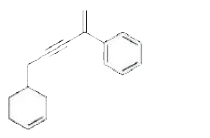Consider the following statements.
I.The transition metals and their compounds are known their catalytic activity.
II. They are able to adopt multiple oxidation states and to form complexes.
Choose the correct option.
I is true
II is true
Both I and II are true
Neither I nor II is true
The correct Answer is:C
To analyze the given statements about transition metals, let's break down the question step by step.
Step 1: Evaluate Statement I
Statement I: The transition metals and their compounds are known for their catalytic activity.
Analysis:
- Transition metals are indeed known for their catalytic properties. They can facilitate various chemical reactions without being consumed in the process.
- This catalytic activity is largely due to their ability to exist in multiple oxidation states, which allows them to participate in a variety of chemical reactions.
- Examples include the use of iron in the Haber process for ammonia synthesis and platinum in catalytic converters in vehicles.
Step 2: Evaluate Statement II
Statement II: They are able to adopt multiple oxidation states and to form complexes.
Analysis:
- Transition metals are characterized by their ability to exhibit multiple oxidation states. This property is crucial for their role in catalysis and in forming various compounds.
- Additionally, transition metals can form complex ions with ligands (molecules or ions that can donate a pair of electrons to the metal). This ability to form complexes is a significant aspect of their chemistry, leading to a wide range of applications, including in biological systems (like hemoglobin) and industrial processes.
Step 3: Conclusion
Both statements I and II are correct. Transition metals are known for their catalytic activity and their ability to adopt multiple oxidation states and form complexes.
Final Answer
Both statements are correct.
Statement I: The transition metals and their compounds are known for their catalytic activity.
- Transition metals are indeed known for their catalytic properties. They can facilitate various chemical reactions without being consumed in the process.
- This catalytic activity is largely due to their ability to exist in multiple oxidation states, which allows them to participate in a variety of chemical reactions.
- Examples include the use of iron in the Haber process for ammonia synthesis and platinum in catalytic converters in vehicles.
Statement II: They are able to adopt multiple oxidation states and to form complexes.
- Transition metals are characterized by their ability to exhibit multiple oxidation states. This property is crucial for their role in catalysis and in forming various compounds.
- Additionally, transition metals can form complex ions with ligands (molecules or ions that can donate a pair of electrons to the metal). This ability to form complexes is a significant aspect of their chemistry, leading to a wide range of applications, including in biological systems (like hemoglobin) and industrial processes.
Both statements I and II are correct. Transition metals are known for their catalytic activity and their ability to adopt multiple oxidation states and form complexes.
Both statements are correct.
Similar Questions
Account for the following :
Transition metals form large number of complex compounds.View SolutionExplain any one of the following statements :
(i) The transition metals are well-known for the formation of interstitial compounds.
(ii) The largest number of oxidation states are exhibited by manganese in the first series of transition elements.View Solution
Knowledge Check
- Question 1 - Select One
Consider the following statements.
I. Transition elements show the great variety of oxidation states in their compounds.
II. The elements giving the greatest number of oxidation states occur at the extreme of the series.
III.The lesser number of oxidation states stems from either too few electrons to lose of share or too many d-electrons for higher valence.
The correct set of statement (s) is/are (choose the appropriate option)AI and IIBI and IICII and IIIDAll of these - Question 2 - Select One
Consider the following statements
I. The constituent of a compound can be separated into simpler substances by physical method.
II. The constituent of a compound can be separated by chemical method.
Choose the correct option.AStatement I is correctBStatement II is correctCBoth the statements are correctDNone of the above statements are correct - Question 3 - Select One or More
Consider the following transformations of a compound P.

Choose the correct option(s)AP is BX is Pd - C/quinoline/H2C
BX is Pd - C/quinoline/H2C D
D
Which of the following statement(s) is/are correct?
(A) Transition metals and many of their compounds show paramagnetic behaviour.
(B) The enthapies of atomisation of the transition metals are high
(B) The transition metals generally form coloured compounds
(D) Transition metals and their many compounds act as good catalyst.View Solution
Consider the following structures (M: central metal).
Choose the correct statement (s):View SolutionConsider the following statements.
I. Extraction of metals from its ores is known as metallurgy.
II.Metallurgy includes only two operations i.e., reduction of metal oxide to metal and refining.
Select the correct statements.View SolutionIn which of the following compounds transition metal is in oxidation state zero
View SolutionConsider the following statements,
I. Adipic acid and hexamethylenediamine are the monomeric units of nylon-6,6.
II. Nylon-6,6 is a polyester.
Which of the following statement is/are incorrect? Choose the correct option.View Solution
